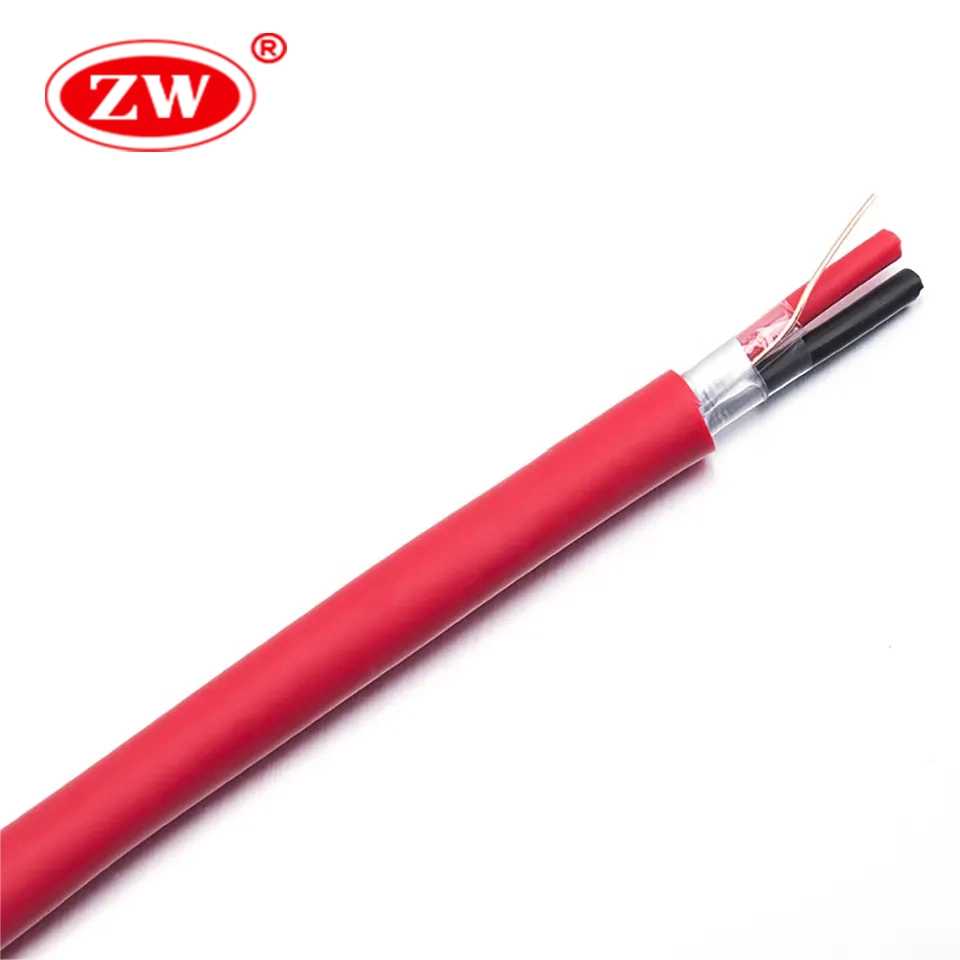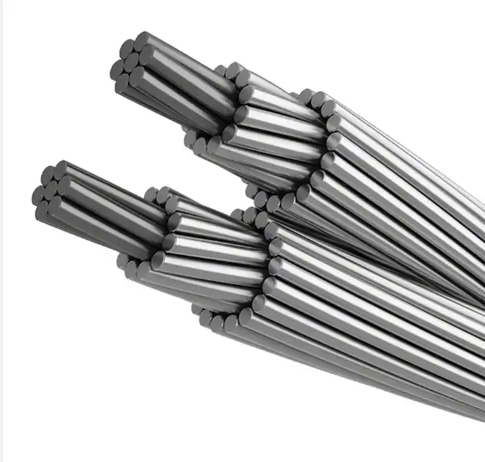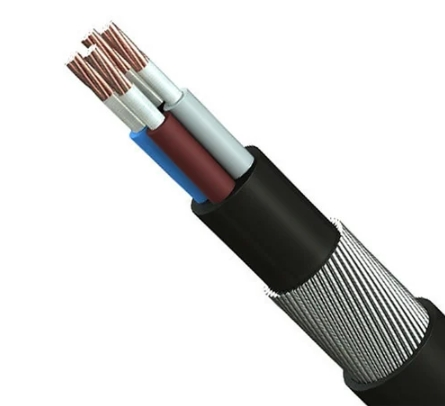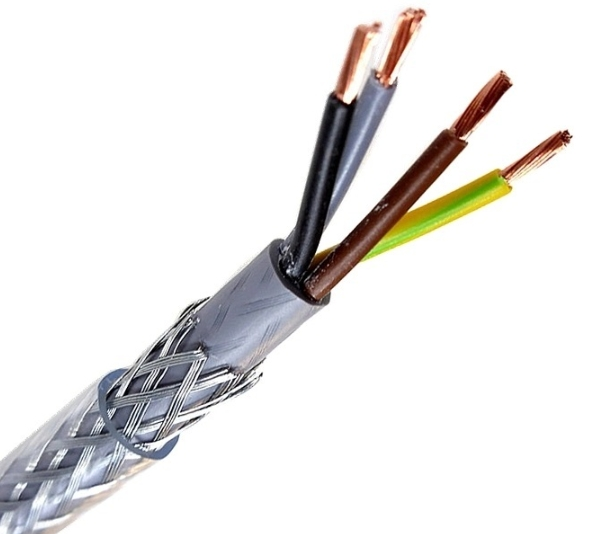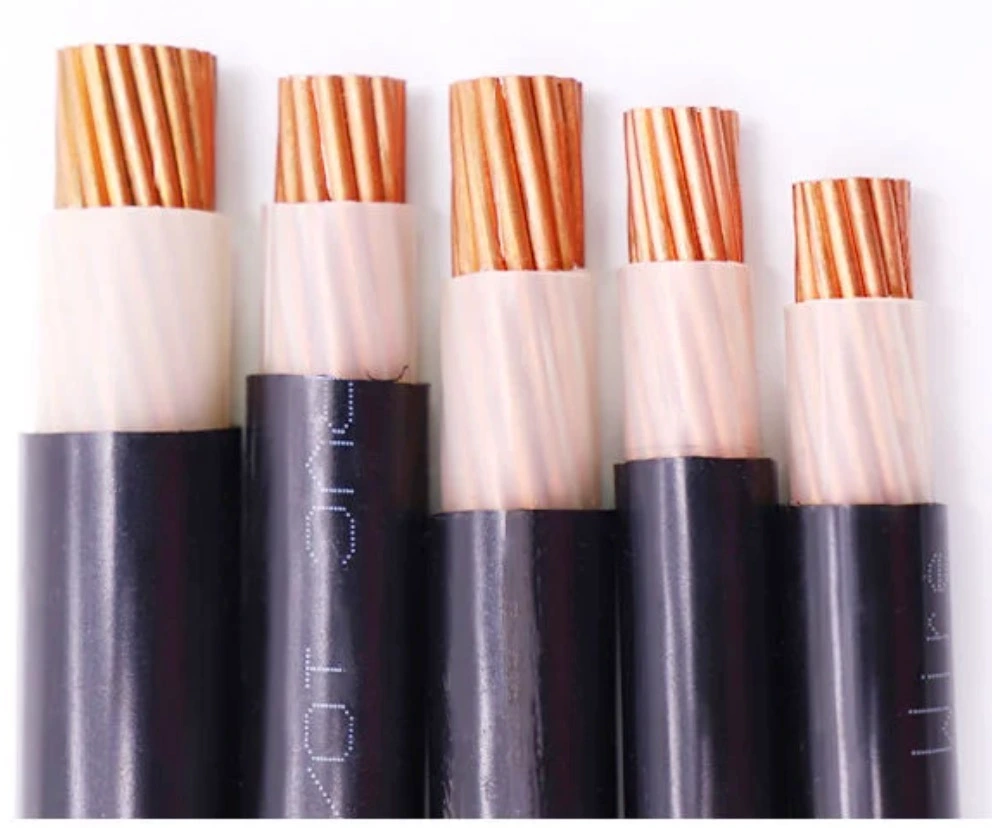The importance of fire alarm systems to us is self-evidence; they are found in every building, constantly monitoring for unpredictable fires. However, the fire alarm cable is often overlooked as the centerpiece of this life-saving system.Fire alarm wires are the backbone of fire detection and notification systems, ensuring timely alerts in the event of a fire emergency, and allowing people to react quickly. Therefore, it’s necessary to learn about fire alarm wires to show respect for our lives and property. In this article, you will learn about alarm cable specifications, types, and selections as well as whether it’s compatible with data cable. Let’s get down to brass tacks.
What is fire alarm cable specification?
Alarm cable is a specialized electrical cable used in fire alarm systems and other life safety applications. These cables swiftly and accurately transmit signals from detectors, pull stations, and other devices to the central fire alarm control panel and notification appliances to ensure the reliable functions of fire alarm systems in the event of a fire emergency. Composed of PVC-coated copper conductors and aluminum foil shielding, the alarm cable is resistant to fire, moisture, and smoke. Depending on the application and safety level, alarm wire can also be equipped with metal armor for added protection. Since it is usually utilized in low-voltage applications, fa cable is usually sized from 18 AWG to 12 AWG and is generally 2 core fire alarm cable; typical sizes are 14/2 fire alarm cable, 16/2 fire alarm cable, 18/2 fire alarm cable, and 14/4 fire alarm cable.
In addition, it’s usually colored red to identify and install easily; red fire alarm cable is also a historical practice.
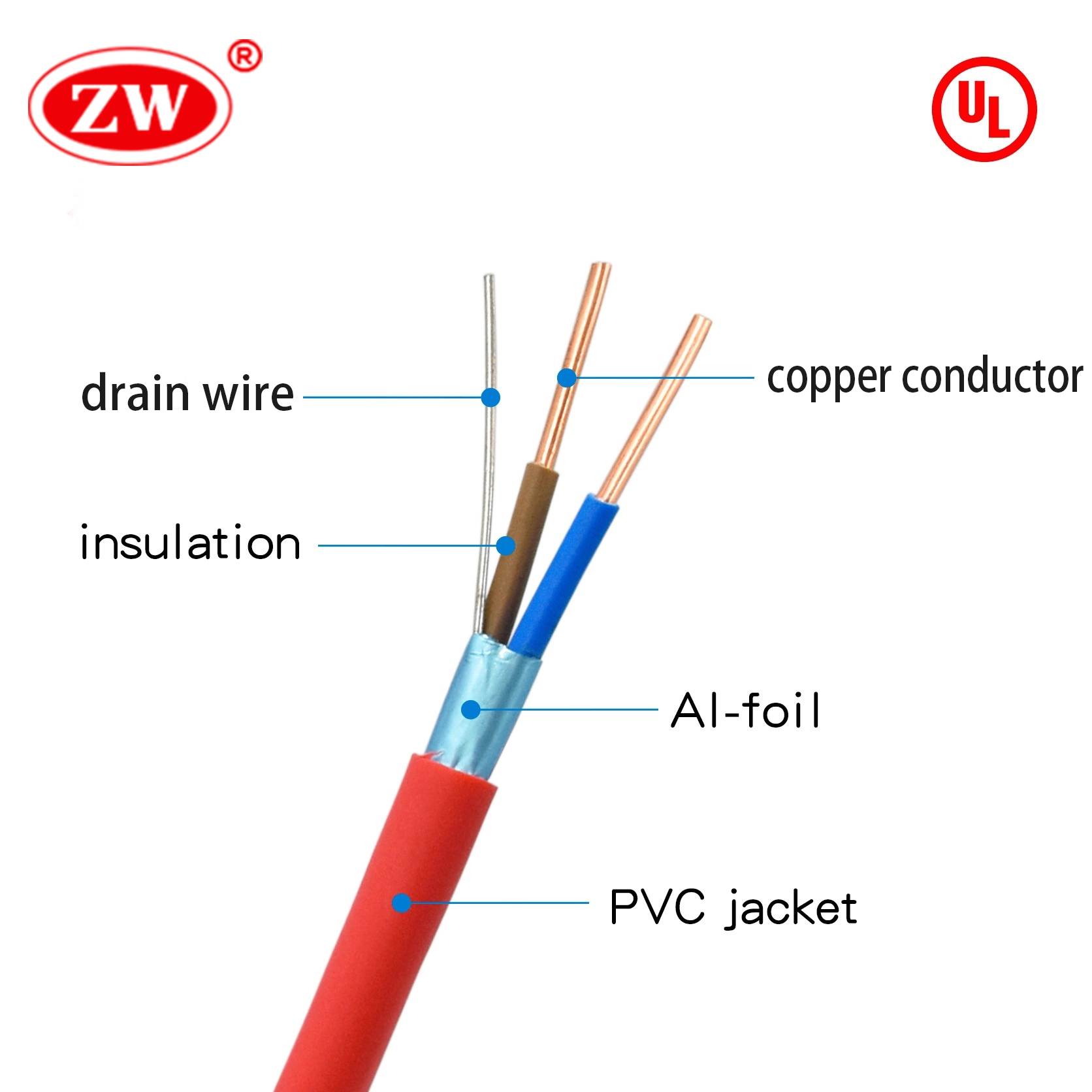
Like any other electrical cable, alarm cabling also comes in many types according to specific applications. However, the alarm wire is more straightforward than other cables to classify.
What are the types of fire alarm cables?
Fire alarm wire is available in various types, but there are two major categories, namely, power-limited alarm cable and non-power-limited alarm cable; these two major categories are subdivided into five specific types, of which power-limited accounts for three and non-power-limited accounts for two. They are: FPL,FPLR ,FPLP,NPLF, and NPLFP. Next, we will discuss the individual types one by one:
Power-Limited Fire Alarm Cable:
FPL: This stands for “Power-Limited Alarm Cable.” FPL cables are a general-purpose type that can be used for horizontal and vertical installations within the building as long as they do not pass through plenum areas.
FPLR: “Power-Limited Fire Alarm Riser Cable” is represented by FPLR. FPLR cables are designed for use in risers or vertical shafts within buildings. These cables have increased fire resistance to stop the vertical spread of flame and smoke between floors and can therefore be used where it is necessary to run through multiple floors whilst maintaining fire safety.
FPLP: “Power-Limited Fire Alarm Plenum Cable” is abbreviated as FPLP. FPLP cable meaning it’s designed for installation in plenum spaces with air circulation, such as shafts and ducts, above suspended ceilings, or below raised floors. Plenum-rated cables have low-smoke and low-flame characteristics to reduce the spread of fire and smoke in air-handling systems.
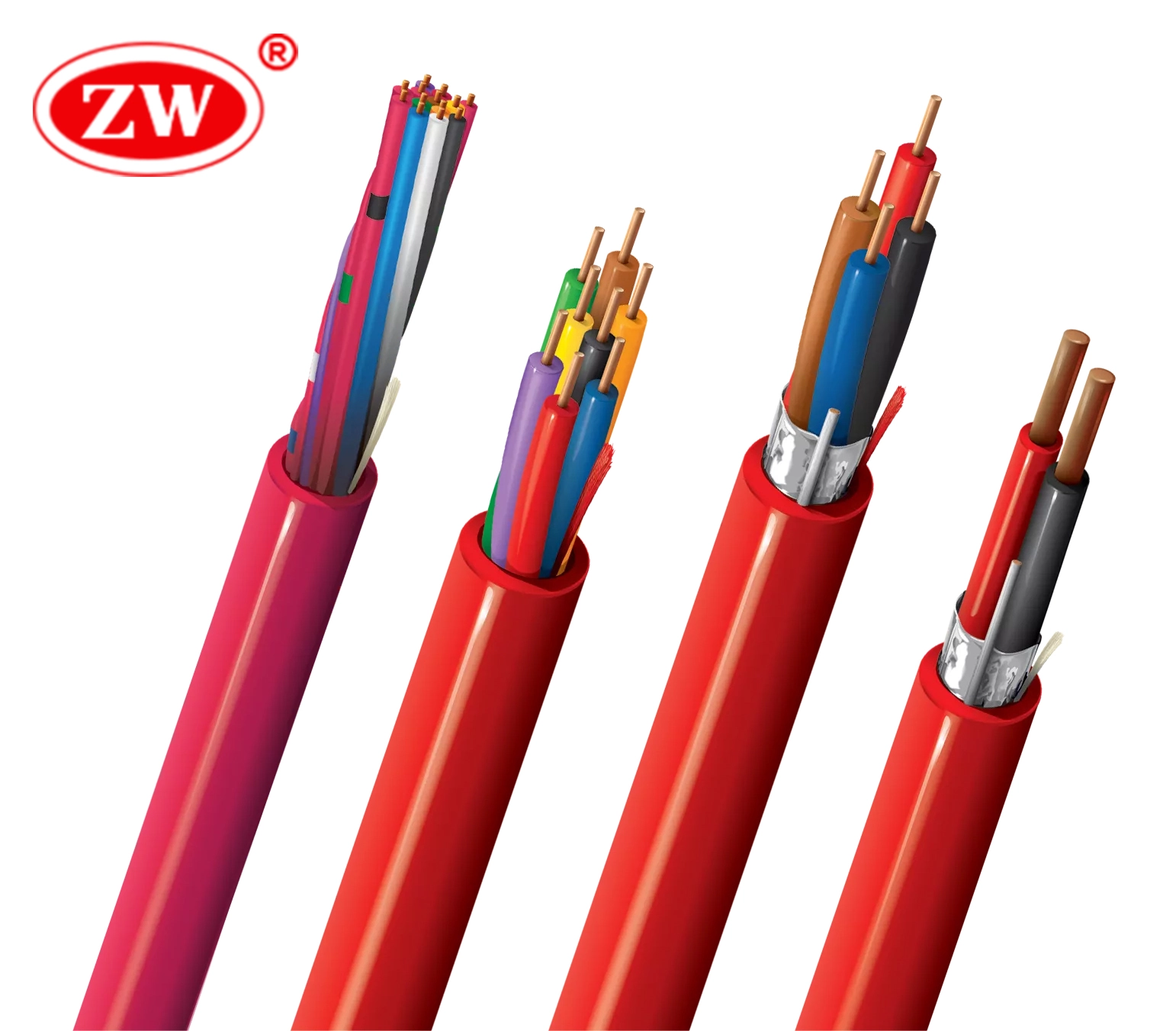
Non-Power Limited Fire Alarm Cable:
NPLF: Non-power limited wire for fire alarm, similar to FPL cable, and literally we can see that it is normally used for alarm applications where has no power limitations.
NPLFP: Non-Power Limited Fire Protective (NPLFP) Cable, is sometimes also referred to as ” Fire-Resistant CI Cable” (Fire-Resistant Circuit Integrity Cable). They are designed to resist the spread of fire and maintain electrical continuity during exposure to flames and extreme heat.
Although there are not many fire alarm cable types, it is not easy to choose the right one at once, right? In order to address this problem, we summarize some crucial factors that must be accounted for when choosing them.
How to choose fire alarm cable?
The selection of fire detection cable is a result of comprehensive consideration of various aspects. When choosing the cable for fire alarm system, due consideration may be given to the following factors:
- System Requirements: Determine the type of fire alarm system you’re installing (conventional, addressable, analog, etc.).If you are installing a relatively simpler conventional fire alarm system where the control panel can identify zones but can’t pinpoint the exact location of the alarm, you can choose non-shielded NPLF cable; and if your system is a more advanced addressable alarm system, you might want to consider the option of the FPLR.
- Installation Environment: Determine whether the installation will be indoors, outdoors, in riser spaces, or in plenum areas (spaces with air circulation). If there is potential exposure to moisture, chemicals, temperature changes, and mechanical stress, you could consider the armored fire alarm cable.
- Cable Type: Select the appropriate fire alarm wire type based on the installation environment and fire rating:
FPL: For Indoor power-limited fire cabling circuits.
FPLR: Vertical runs between floors in riser spaces.
FPLP: Installation in plenum areas with air circulation.
In general, the power-limited alarm wire is more commonly used than non-Power limited alarm cable. And consider using shielded fire alarm cable if electromagnetic interference is a concern.
- Cable Specifications: Consider cable specifications based on the requirements of the fire alarm system, including conductor size, insulation (copper or tinned copper) and jacket materials(PVC or LSZH), fire resistance rating (e.g., 2 hour rated fire alarm cable), and voltage rating. In addition, consider the cable length. Here is a chart of fire alarm cable size in mm and their applications.
| Fire Alarm Cable Size in mm and Their Application | ||
|---|---|---|
| AWG | mm² | Application |
| 18 | 0.82 | Suitable for relatively short cable runs and devices like smoke detectors and heat detectors. |
| 16 | 1.31 | Can be used for devices that require slightly higher power, such as horns, strobes. |
| 14 | 2.08 | Can be used to connect control panels and larger notification appliances. |
| 12 | 3.31 | Used for extended cable runs and devices that require even more power. |
- Installation Method: Determine the installation method (conduit, cable tray, etc.) and ensure the selected alarm system cable is suitable for that method. As an example, direct burial fire cable does not need to be installed in the conduit.
- Alarm cable standards: Ensure that the chosen cable meets relevant testing and certification standards, such as UL 1424, which tests cables’ fire performance.
Choosing the right alarm cable is crucial for the safety and efficiency of fire alarm systems. Still, it’s also important to consider how the fire alarm wiring will interact with other cabling systems in the building, as modern facilities require seamless integration of various systems. As an integral part of our daily routines, the coexistence of alarm cabling and data cabling is a consideration that should not be overlooked. Now let’s discuss.
Can you run fire alarm cables with data cables?
For saving costs and share pathways, smoke alarm cable can be run with data cables. But some special requirements should be taken into consideration:
- Maintain Separation: Whenever possible, use separate conduits or raceways for alarm cables and data cables; this physical separation helps reduce interference. And the National Fire Protection Association (NFPA) 72 National Fire Alarm and Signaling Code recommends a minimum spacing of 2 inches between alarm cables and other wiring, including data cables.
- Shielding: Consider using shielded data cables when there is no enough space. Because data cables can produce EMI and RFI that might affect the performance of fire alarm systems.
- Routing: When the cables are connected in parallel over short distances, the data cable can be routed vertically with the alarm cable, which can reduce the electromagnetic coupling between the cables.
- Interference Test: After the installation, conduct interference testing to ensure that both the fire alarm systems and data communication function correctly without mutual interference, especially the alarm wire.
These methods minimize potential disruptions, ensure safety and compliance, and are somewhat versatile.
Conclusion
All in all, the importance of learning alarm wire specifications, types, and selection for the safety of our own lives and property cannot be overstated, and understanding the compatibility of alarm wire with data cables can maximize space and cost savings. If you want to achieve the long-term performance of your alarm systems with reliable alarm cables, ZW Cable is your preferred choice. With decades of professional experience, ZW can help you with any concerns about alarm cables and provide you with fire alarm cable installation guide.

